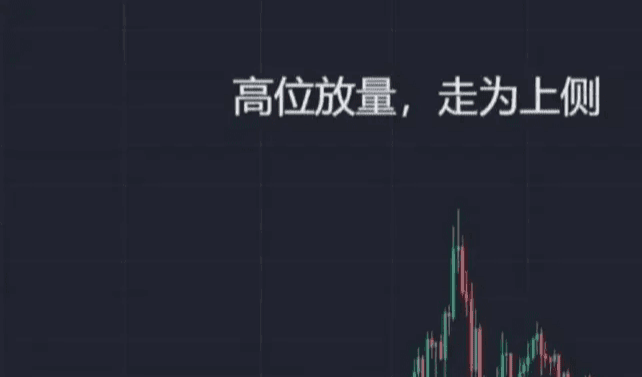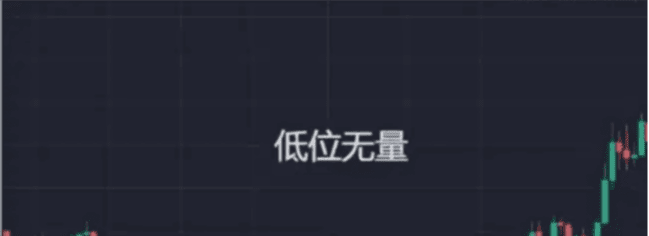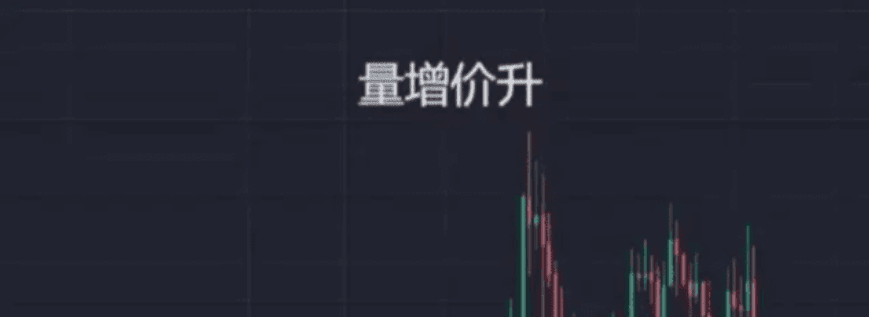We have no insider information, no funding advantage, nor the trading experience to withstand several rounds of bull and bear markets.
What we can rely on is only to understand the market, understand ourselves, establish rules, and control emotions.
The crypto world is not a shortcut to wealth, but a battlefield where only a few survive.
I. First recognize the market: this is a world ruled by uncertainty.
The essence of the market is not a technical game, but a high-complexity probability game.
You must accept that no matter how brilliant a strategy is, it cannot consistently make profits in all environments. Any trading system that claims a '100% win rate' is a scam.
What we can do is not to conquer the market, but to adapt to it, using discipline to combat uncertainty.
Profits and losses come from the same source: how you make money determines how deep your losses can be. Heavy betting can double your money or lead to total loss; high leverage.
Rod grabbing rebounds: getting a taste of profit, but if the direction is wrong once, it results in immediate liquidation; averaging down against the trend: sometimes it can get out of a bind, but in a one-sided trend, it's slow suicide. The traders who can truly survive are those who repeatedly bet in a 'probability advantage' with systematic methods—winning big when they are right and losing little when they are wrong.
II. Recognize yourself again: you are not a genius, and you are certainly not Liang Xi.
Most people in the market do not die from ignorance, but from overconfidence: obsessed with predictions, attempting to catch all tops and bottoms; technical obsession: piling on indicators while neglecting position management and risk control; superstitious about luck: attributing profits to oneself and blaming the market for losses; overconfidence: after several profitable trades, thinking they are invincible.
Please remember: Discipline > Technique, Execution > Inspiration, Stability > Excitement.
Profitable trades are often boring.
III. The underlying logic that ordinary people can also make money.
You don't need to become a genius; you just need to establish a replicable and sustainable trading system.
1) Capital management: Use only a small portion of total funds for each position, lightly test the waters, confirm the trend before adding positions, and do not start with heavy bets. The total position should not exceed 30%, leaving room for maneuver.
2) Suitable cycles for oneself: short-term for those with strong market sense and quick reactions; swing trading for those who can endure fluctuations and ride trends; long-term for those who understand macro fundamentals have a better chance.
3) The trading system should be simple, executable, and replicable: Trend strategy: follow the trend, do not increase positions against the trend; fluctuation strategy: sell high and buy low, stop losses should be quick; arbitrage strategy: cross-platform price differences, small fluctuations for arbitrage, high win rate but slow.
4) Stop losses and take profits must be mechanically executed. Set stop-loss lines before entering, and take profits in batches at the designated points; do not be greedy or timid; capturing mid-stage trends is sufficient.
5) Emotional management reduces the frequency of watching the market, avoids impulsive trading, accepts losses, does not average down on losses, does not inflate profits, keeps a trading journal, continuously reviews and optimizes the system.
IV. The key to truly surviving: mindset and compound interest.
The hardest thing to defeat in the crypto world is not the market, but one's own greed and fear.
What you need to do is not to achieve 'tenfold in a year', but to aim for stable annualized returns + strict stop-loss + not being eliminated from the market.
Don't underestimate the importance of 'live observation'; compound interest is the only way retail investors can compete with institutions: 30% annualized returns would be 20 times in 10 years, 50% annualized returns would be 57 times in 10 years; doubling in one year and going bankrupt in the second year results in zero.
But if you accidentally lose...
Final advice: Don't become a 'legend', instead, be a 'survivor'.
In the crypto world, legendary stories belong only to a very few; the vast majority of winners are ordinary people who can survive in the long market.
Make fewer mistakes, execute more, review often, and maintain rationality and patience.
The market is always changing, but the rules do not change. Your only goal is: to not be washed out in this grand wave of sand. If you feel confused, consider saving this article as a starting point for your trading journey. It is not for becoming rich, but to stay in the game.
Let’s encourage each other.
There are many methods for trading, but not all methods can be mastered. We all hope to achieve good results with the simplest methods, but friends in the crypto world are not unable to select good coins; rather, they think too complicated!
Trading is simply about doing four things: selecting targets, entry points, exit points, and managing positions. Traders need to have an independent trading system to execute these four actions.
In trading practice, the ABC trading strategy + stable win rate, simple and easy to understand.
(1) Source and basic connotations of the strategy
The ABC trading strategy is an interpretation based on the core trading theory abcd developed by the author in collaboration with the teacher.
The teacher's trading method applies smoothly to the A-share market, and combining it with the characteristics of crypto trading, Lele has expanded this theory.
The core trading theory of abcd incorporates the essence of Dow Theory, Elliott Wave Theory, Turtle Trading Rules, D'Alembert Box Theory, Trading Psychology, and other theories.
Figure 1 shows a classic upward trend. The underlying logic is that the bottom rises and the upward trend continues.
Figure 2 shows a classic downward trend. The underlying logic is that the top is lowered, and the downward trend continues.
Any trading target's K-line trend is a continuous repetition and superposition of these two classic patterns. A deep understanding of the following two classic patterns is essential.
Deep understanding is the fundamental essence of mastering the ABC trading strategy.

(II) Entry and exit points.
The ABC trading method primarily focuses on right-side trading, pursuing high win rates, not extreme profits. It advocates for staggered entries, staggered profit-taking, and staggered stop-losses to minimize risk.
Taking Figure 1 as an example, buying points appear at X and Y, where the buying characteristic at point X is 'Four In' (the closing price exceeds the highest price of the left 4 K-lines), and the buying characteristic at point Y is that the closing price exceeds point B.
There are two stop-loss points: the first is 'Two Out' (the closing price of the current K-line is lower than the lowest price of the left two K-lines), and the second is point C, with all losses stopped here.
The ABC trading method allows for some left-side trades, with key points being to control positions and stop losses.
In practical application to Figure 3, it has formed an upward ABC structure, with arrow 1 being the 'Four In' buying point (the two buying points X and Y described in Figure 1 coincide in practical application in Figure 3).
The two stop-loss points are indicated by arrow 1, which may lead to a 'Two Out' and point C.
Note: 'Four In, Two Out' also comes from the teacher.

Compared to stop-loss points, profit-taking point models are relatively complex, with many dimensions to choose from and requiring multiple rounds of profit-taking.
The three basic methods of taking profit are:
1. 'Two Out' profit-taking.
In Figure 3, arrow 2 indicates that the closing price is lower than the lowest price of the left two K-lines, indicating a take profit.
2. Excess profit taking.
Any short-term rapid volume increase on the K-line indicates that it is time to take profits, belonging to left-side profit-taking.
3. Multiple points for taking profit.
Draw a horizontal line at the closing price of point D; if there are multiple points on the right side near the same horizontal line, you can choose to take profits near that level.
In addition, there are also low-volume profit-taking, critical point profit-taking, box doubling profit-taking, etc.
(III) Position size determines the extent of profit, with many factors and varying weights.
The main principle is:
1. When the overall trend is upward, the position for long positions can be higher, while for short positions it should be light. The opposite is also true.
2. The stronger the bullish volume compared to bearish volume, the higher the position ratio; when the volume is flat, position control is necessary. The opposite is also true.
3. Left-side entries generally do not exceed 1/4 of the position.
The above are the key points of the basic version of the ABC strategy.
On this basis, combined with complex K-lines, to pursue a higher win rate, it is necessary to use tools such as Fibonacci retracement, multi-point connections, rising/falling channel lines, triangles, etc., in conjunction with the application of the ABC trading method.
The above content will be shared in the advanced version of the ABC strategy, along with detailed explanations of left-side entries, more profit-taking methods, 'Four No Entries', 'Two No Exits', and other advanced techniques.
Three rules for volume-price relationships: Increased volume, rising price means entry; flat volume, falling price means exit! 1. High volume at high levels is the best strategy.

High levels typically refer to coin prices near historical highs or operating at high levels with 3-4 significant cycles. If there is a volume increase at this time, it indicates that the main force is selling off and distributing chips to retail investors. At this point, it is best to exit and observe. If there is no relatively large volume at this position, do not exit easily.
2. Low volume at low levels is the best strategy.

Low volume at low levels may indicate that the main force is still distributing, and has not yet reached the accumulation stage. As long as there is no accumulation, the true lifting opportunity has not arrived; only when the volume increases can it be confirmed that the main force is acting.
Therefore, one must dare to follow through on increased volume at the bottom, even if it goes wrong; it's worth the risk, just that the waiting time may be longer, but it won't result in losses.
3. Enter when volume increases and price rises without fear.

As trading volume increases, the price continues to rise, indicating that the market has this momentum. According to trend principles, there will be subsequent actions; it will not just be a single wave, so be bold in entering the market.
But also be careful when encountering rising volume with flat prices or rising prices with increased volume.
For the overall market:
If the overall market volume continues to strengthen, there will be more opportunities for various coins; the overall operation guideline is to gather strength upstream.
Conversely, if the volume is not very noticeable, it is better to strike lightly; if the momentum weakens, opportunities in individual stocks are scarce, so it is best to exit rather than strike easily.
For individual coins:
1. When trading volume increases, the overall market is still building up for a major rise; when trading volume decreases, energy decreases, and there is no need to focus too much attention on coins with low volume.
2. Pay attention to positions; both volume increases at high and low levels can potentially cause trend reversals, so do not neglect to check.
3. High trading volume leads to significant price drops, indicating that the trend continues to decline. If this occurs later with reduced volume, it indicates that the downward trend is about to end.
The day when the price of the coin drops less is the day of reversal.
How to maintain a 90% win rate in the crypto world!!!
The secret to maintaining a 90% win rate in the crypto world is that in this tempting and risky environment, many investors aspire to sustain extremely high winning rates.
However, achieving a 90% win rate is not easy; it requires deep market understanding, rigorous investment strategies, and strong risk control capabilities.
The hardest part of trading cryptocurrency is not selecting coins or buying and selling, but waiting; the hardest part of life is not striving, but making choices. Downward trends cleanse impatience, while upward trends test patience. Trading can help us grow continuously, and growth is painful; this pain does not come from growth itself, but from facing many changes and unforgettable experiences during the process.
Disciplined people in the crypto world find joy in pain; where there is hope, hell is also paradise.
In the crypto world, retail investors always give up on coins that haven't risen and chase those that are already high; in life, people always cherish what they haven't obtained while forgetting what they already have.
The reason for losing money in crypto trading is not due to simplicity, but because of complexity; people are happy not because they get much, but because they have fewer worries.
Mu Qing only does real trading, and the team still has positions for entry speed.
